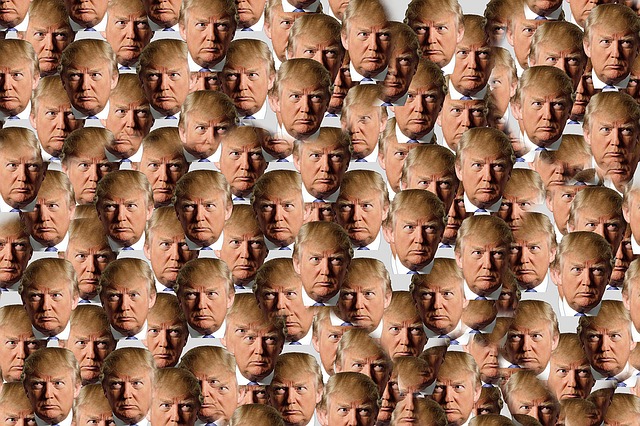 In analysis of US Grand Strategy under a future President Trump, Rod Lyon warns about a reversal of the US rebalance to Asia, noting ‘turbulent waters lie ahead’, and echoing concerns aired by Kim Beazley and Peter Jennings.
In analysis of US Grand Strategy under a future President Trump, Rod Lyon warns about a reversal of the US rebalance to Asia, noting ‘turbulent waters lie ahead’, and echoing concerns aired by Kim Beazley and Peter Jennings.
Donald Trump has warned Japan and South Korea that they need to contribute more or see the US withdraw from the established relationships that underpin Northeast Asian security, and argues that Japan and South Korea should get nuclear weapons as part of this process of greater burden sharing. These policy positions would upend the stability and security of Asia, and generate power vacuums that would be filled by a rising China, against which Trump threatens a trade war. While Commander in Chief Trump would have to act within established Congressional checks and balances and consider advice from US Departments of State and Defense, a possible US strategic retrenchment from Asia has to be taken seriously.
In such a security environment, Japan and South Korea would face a powerful and ever more confident China, an unpredictable nuclear-armed North Korea, as well as an assertive Russia to its north, without US support. Japan would likely accelerate constitutional reform towards ‘normal defence power’ status. For the South Koreans, the withdrawal of US forces from the Korean Peninsula would generate greater risk of provocations from Pyongyang, and a commensurate greater risk of war.
Tokyo and Seoul would confront a key question: does non-nuclear deterrence work against a nuclear armed state? If the outcome of such a debate is that it doesn’t, then both states must reconsider their non-nuclear postures, or see China well placed—absent a credible US presence—to reshape Asia’s security order into a ‘Sinosphere’. The decision to go nuclear wouldn’t be a foregone conclusion, particularly for Japan, given the strong anti-nuclear sentiment in Japanese society after Hiroshima, Nagasaki and Fukushima. From Seoul’s perspective attention would be diverted from the clear, immediate threat of a nuclear-armed and unpredictable North Korea, to concerns over a nuclear-armed Japan given the deep historical animosity that clouds the relationship between Seoul and Tokyo.
Any strategic retrenchment under a President Trump creates the conditions for the 1968 Nuclear Non-Proliferation Treaty (NPT) to be undermined, perhaps fatally, whilst exacerbating regional security dilemmas, and spiking tensions on the Korean Peninsula and with China. A decision to go nuclear by Tokyo and Seoul would mean that internal debate in China over whether to discard the traditional ‘no first use’ force posture would intensify, particularly if China faced a nuclear-armed Japan. China may embrace a counterforce posture with greater numbers of MIRVed road-mobile ICBMs, and move towards a ‘launch on warning’ force posture. Chinese responses to Japan going nuclear could prompt further proliferation elsewhere, including India and Pakistan. Trump’s ‘bull in a china shop’ foreign policy thus threatens raise the prospect of proliferation cascades across Asia and beyond. Turbulent waters, indeed!
For Australia it’s not at all clear whether the US under President Trump would walk away from ANZUS. At a recent meeting between the Australian Ambassador to the US, Joe Hockey, and the Trump campaign, the message was that the US would maintain a ‘special relationship’ with Australia. However if the US under Trump did renege on long-established security alliances and walked away from extended nuclear deterrence security guarantees to Japan and South Korea, then its military commitments to Australia under the broader Australia-US alliance would be far less assured.
The 2016 Defence White Paper states that Australia’s alliance with the US ‘will continue to be the centrepiece of our defence policy. The government will continue to strengthen the alliance including by supporting the United States’ role in underpinning the stability of our region through its rebalance.’ Yet Trump’s proposed policies would reverse that rebalance, and with it, leave Australian defence policy broken.
Although the 2016 DWP doesn’t directly address the importance of Extended Nuclear Deterrence security guarantees to Australia, the 2009 White Paper makes this clear, noting
‘…that protection provides a stable and reliable sense of assurance and has over the years removed the need for Australia to consider more significant and expensive defence options.’ (6.34)
Though this implies consideration of an Australian nuclear weapons option in the absence of US extended nuclear deterrence, a range of factors would challenge the prospect that Australia could easily or quickly embrace such an option.
Certainly our defence planning assumptions would have to be reviewed, additional funding made available and new capability beyond that proposed in the DWP considered. That could include new air and naval platforms and capabilities to enable us to project greater power as part of a regional coalition than currently envisaged under the DWP. Some capabilities would be difficult to reconstitute, such as the provision of intelligence gathering, C4ISR and advanced space capabilities, and access to critical military technologies. New security relationships would need to be formulated quickly with Japan, South Korea and India, and key Southeast Asian states to counterbalance China. Finally, Australia would have to be far more discriminating in committing the ADF to operations beyond the Indo-Pacific.

